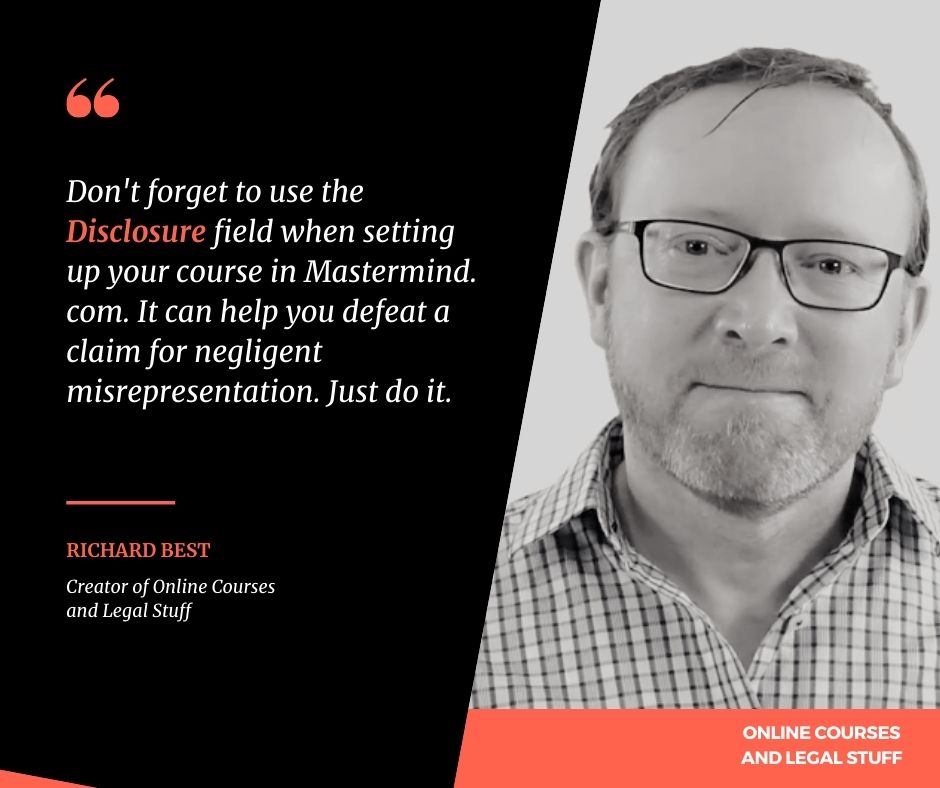
What’s this all about?
When someone purchases access to a course on Mastermind.com, they need to click a checkbox to indicate that they’ve ‘read and accepted the disclaimer’. The disclaimer is below the checkbox. You can see it when you click its link.
It’s important to note that the purpose of that disclaimer is to protect Mastermind.com and its affiliates. It is not a disclaimer that seeks to protect you as the course provider. This makes it important to utilise the ‘Disclosure’ field when setting up your course. You can do this when on the ‘Edit Mastermind Details’ screen. You’re limited to 300 characters there so you need to get to the point, but it’s still useful. My one, for example, is this:
“The course is provided for general informational purposes only. I am not providing you with legal advice, and no lawyer-client relationship is being formed. Seek professional advice if required. In signing up, you are agreeing to our Terms of use that are linked to below the course description.”
Helpfully, Mastermind puts this disclosure statement (disclaimer) underneath the ‘Buy Now’ button and creator profile on the right hand side of your course page.
Two main purposes of disclaimers
I talk about disclaimers in more detail in my course on Mastermind.com but the important point to note is that they usually serve two main purposes:
- First, they help you to defeat the existence of a duty of care arising and that, in turn, helps you to defeat a claim against you in negligence if a course taker alleges that you were negligent and caused them loss. In other words, they help you defeat claims for negligent misrepresentation or negligent advice.
- Second, and somewhat relatedly, they enable you to make it clear that a particular form of relationship does not arise. Sometimes this can be important because, in some contexts, from the moment a particular form of relationship arises, one party can start owing obligations or duties of care to the other. As you’ll see from my example above, I’m making it clear that no lawyer-client relationship arises. In other contexts some people might want to make it clear that, for example, no doctor-patient or therapist-client relationship arises.
Just do it
So, my suggestion is this: don’t overlook the Disclosure field when setting up your course. It’s optional, but it’s desirable that you add a disclaimer that’s specific to the nature of your course. It’s a simple step to take. You can get more protection by developing terms of use, which I explain and facilitate in my course, but as a first step – and one you can take for free – it’s desirable to add a disclaimer.
